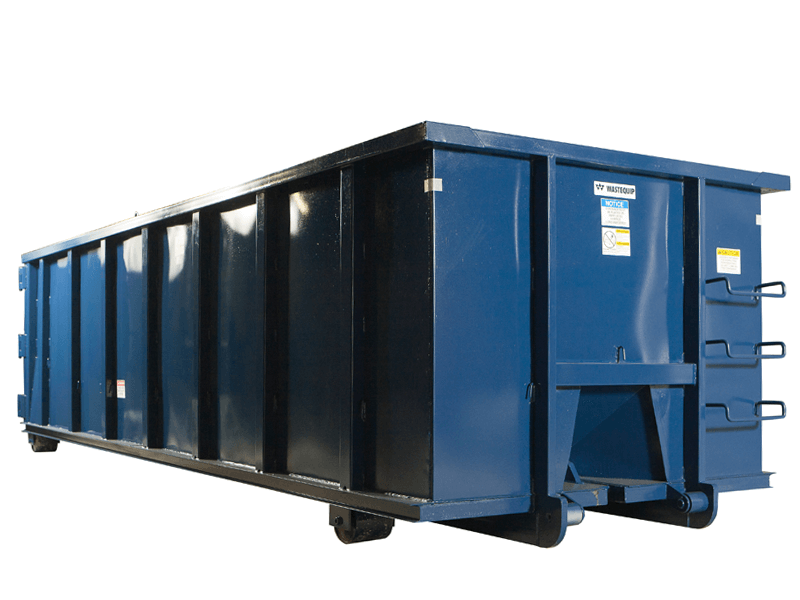Roll-Off Dumpster Sizes: What Are They and How Do They Work?

When you’re tackling a big project, whether it’s a home renovation, yard cleanup, or a construction job, you’re likely going to end up with a lot of debris. One of the most convenient ways to manage all that waste is by renting a roll-off dumpster. But before you order one, knowing the right size for your needs is important. Picking the wrong size can lead to unnecessary costs, extra trips, or insufficient space for your debris. Understanding roll-off dumpster sizes and how they work can save you time, money, and a lot of frustration.
In this blog, we’ll explain the different roll-off dumpster sizes, how they work, and how to choose the right one for your project. By the end, you’ll better understand which dumpster size fits your needs and how to get the most out of your rental.
What Is a Roll-Off Dumpster?
A roll-off dumpster is a large, open-top container designed for temporary use, usually for jobs that create a significant amount of waste. The name “roll-off” comes from how these dumpsters are delivered and picked up. A special truck rolls the dumpster off the back and onto your driveway or job site. Once you’re done, the truck returns to haul away the filled container. Roll-off dumpsters are commonly used for home renovations, large cleanouts, landscaping projects, and construction jobs.
The benefit of using a roll-off dumpster is its convenience. Instead of making countless trips to the dump, you can throw all your debris into one place and have it hauled away in a single trip. However, it’s crucial to choose the right dumpster size for your project to avoid overfilling or underutilizing the container.
Understanding Roll-Off Dumpster Sizes
One of the most important things to consider when renting a dumpster is the size. Roll-off dumpster sizes vary based on their capacity, typically measured in cubic yards. Choosing the right size is essential to ensure that you don’t end up paying for more space than you need—or worse, not having enough space for all your waste. The most common roll-off dumpster sizes are 10-yard, 20-yard, 30-yard, and 40-yard containers.
Let’s break down each size and the types of projects they are best suited for:
10-Yard Dumpster
The 10-yard dumpster is the smallest roll-off dumpster available and can hold up to 10 cubic yards of waste. This is ideal for smaller jobs such as attic or garage cleanouts, minor home renovation projects, or yard debris from landscaping. This size should do the trick if you remove furniture, a few pieces of drywall, or other light materials. It’s also the most affordable option for those who don’t need a large container.
20-Yard Dumpster
The 20-yard dumpster is among the most popular choices for homeowners and contractors. With double the capacity of a 10-yard dumpster, it can hold up to 20 cubic yards of waste. This makes it perfect for medium-sized projects like kitchen or bathroom renovations, roof replacements, and larger landscaping jobs. The 20-yard dumpster balances capacity and space efficiency, making it a versatile option for various tasks.
30-Yard Dumpster
Moving up to the 30-yard dumpster, you get a container that can handle more substantial projects. With the ability to hold 30 cubic yards of waste, this size is typically used for large-scale renovations, major cleanouts, or construction projects. If you’re working on an entire home remodel or have a lot of bulky waste like old appliances or construction debris, the 30-yard dumpster gives you the space you need without worrying about overfilling.
40-Yard Dumpster
The largest roll-off dumpster size is the 40-yard container, which can hold up to 40 cubic yards of waste. This is often used for commercial projects, major construction jobs, or very large home cleanouts. If you’re demolishing a part of a house or working on a multi-family property, the 40-yard dumpster provides the maximum space to handle all types of materials, from heavy debris to lighter trash.
Knowing the roll-off dumpster sizes available and their uses helps you select the right one for your needs. Overloading a smaller dumpster can lead to extra fees while renting one too large may waste your money. Understanding these sizes ensures you make the most efficient and cost-effective choice.
How Roll-Off Dumpsters Work
Once you’ve determined the right size for your project, understanding how the roll-off dumpster process works will make the rental smoother. Here’s a simple breakdown:
Ordering the Dumpster
After deciding on the dumpster size, you can contact a rental company and schedule the delivery. Be sure to provide details about the project, which will help the company recommend the best option.
Delivery and Placement
A truck delivers the dumpster to your site and places it in a convenient location, typically your driveway or construction site. Ensure there’s enough space for the truck to roll off the dumpster safely.
Filling the Dumpster
As you work on your project, you’ll fill the dumpster with debris. Be mindful not to overfill it past the marked fill line, as this can lead to additional fees or delays in pickup. For projects involving construction materials, it’s important to consider sustainable waste management practices, which help reduce the environmental impact of your debris.
Pickup and Disposal
You’ll schedule a pickup once your project is complete or the dumpster is full. The rental company will haul it away and dispose of the waste properly. In some cases, recyclable materials may be sorted from the debris.
Conclusion
Choosing the right roll-off dumpster size is essential for managing your project’s waste efficiently. Whether you’re doing a small cleanout or a large-scale construction project, there’s a dumpster size that fits your needs.
If you’re planning a project and need reliable dumpster rental services, Sarasota Dumpster Rental is here to help. With a wide range of roll-off dumpster sizes and a commitment to fast, efficient service, we’ve covered your waste management needs. Reach out to schedule your rental today!
